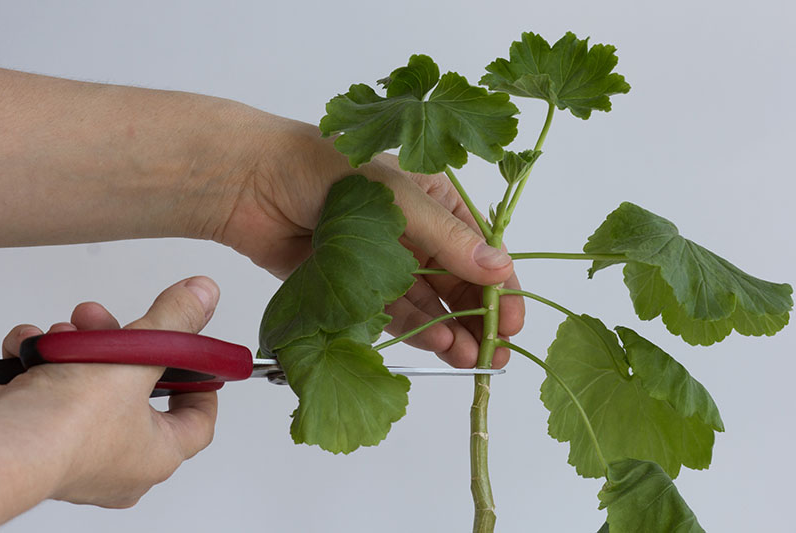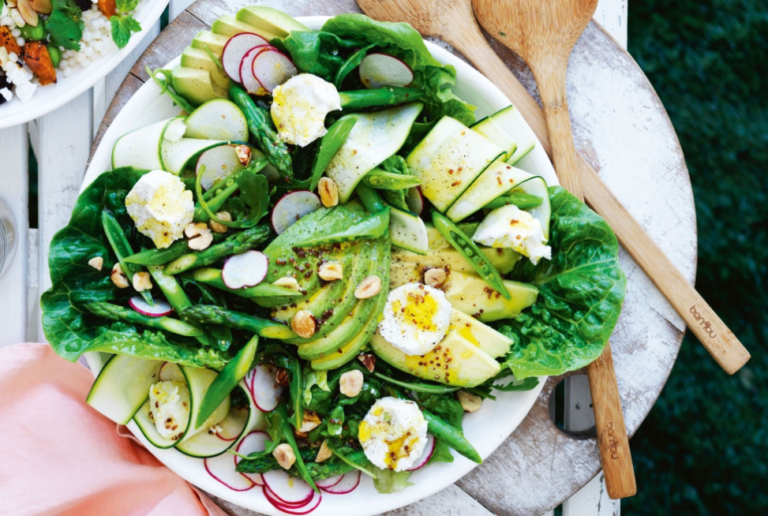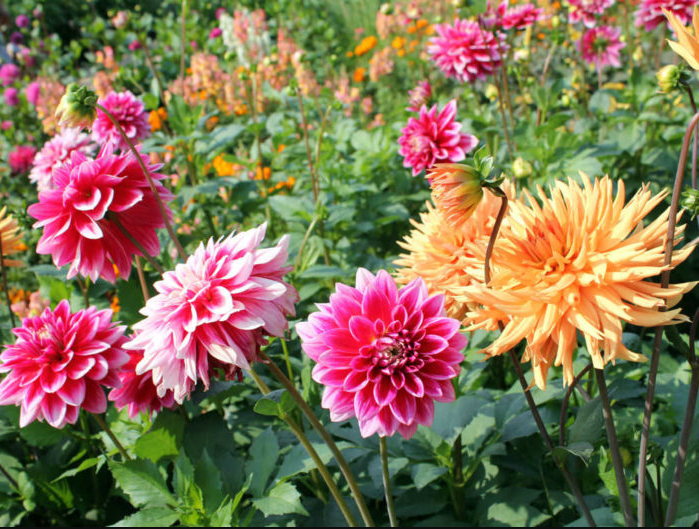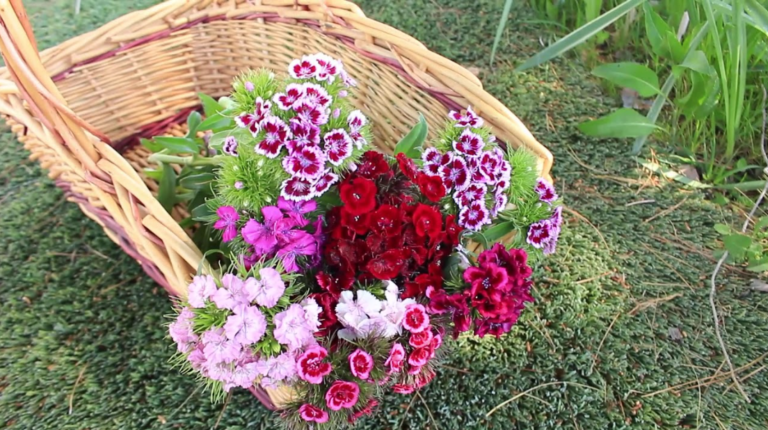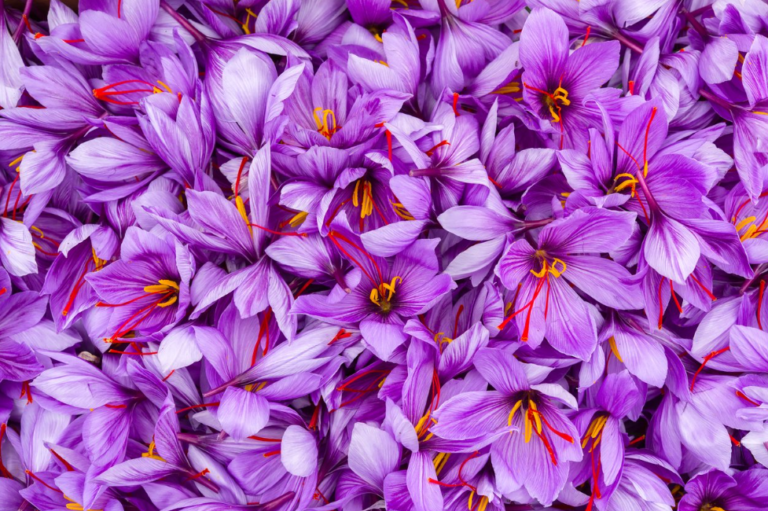HOW TO PROPAGATE GERANIUMS FROM STEM CUTTINGS
Vibrant geranium flowers are favorites of home gardeners, adding color to window boxes, borders, and beds.
There are three types: the hardy cranesbill (Geranium spp.), the hanging ivy type (Pelargonium peltatum), and the garden geranium (Pelargonium x hortorum).
In this brief article, we zero in on how to start new plants by taking stem cuttings from existing ones.

Preparing a Stem Cutting
The best time to take a cutting is when a plant has a flush of new growth, and before it sets buds, at any time during the growing season.
If you are growing garden geraniums as annuals, taking cuttings in fall before the plants fade means you’ll have fresh new ones to plant out in spring.

Here’s how to do it:
Choose a sturdy stem with healthy leaves. Try to avoid the flimsy newest growth and the older, woodiest stems, as well as any with discolored or damaged foliage.
Snip off the lower foliage, leaving two or three leaves at the top, so you have three to four inches of bare stem. Remove any flower or leaf buds, as they might direct energy away from root formation.
Rooting Stems in Water
Place the stem in a clean, clear glass or jar that is four to six inches deep.
Fill the jar with enough water to cover the main stem, but not enough to touch the leaves.
Place on a sunny windowsill in a location that maintains an average temperature of 65-75°F.
Change the water daily to keep it fresh. After about four weeks, you should see roots developing at the bottom of the stem.
Rooting in Potting Medium
An alternative method is to use a sterile potting medium instead of water.
Fill the container with potting medium, to about one-half inch below the rim. If desired, you can dip the cut end of the stem into powdered rooting hormone.
Make a hole and place the stem into the potting medium, pushing it down far enough to cover all the places where leaves were removed, as roots will form from these leaf nodes
Firm the potting medium around the stem to anchor it firmly.
Water thoroughly and place in a location with an average temperature of 65-75°F and bright sunlight. You can use a heat mat and grow light if you wish.
Keep the potting medium slightly moist but never allow it to become soggy or to completely dry out.
Some folks like to create a mini-greenhouse for cutting by placing a clear plastic bag over the pot. This is a clever way to maintain the appropriate ambient temperature and moisture required.
If you choose this method, be sure not to seal the bag or expose the plant to direct sunlight or it may become overheated.
Transplanting
Once you see roots through the clear container or new shoots on the stems growing in the potting medium, you’ll know that your cuttings are thriving.
Taking Geranium Cuttings
1. Cut the parent plant just above a leaf joint on the main stem and then trim the cutting you’ve taken to just below the joint. Creating an angled cut with a sharp knife will give a clean cut and ensure that the threat of disease is reduced.
2. Strip off most of the leaves and make sure the cutting is between 3” and -4” long. The healthiest part of a plant is nearest the growing tip, so short cuttings are best.
3. We place our softwood cuttings into the Hydropod Cuttings Propagator. A mist of water and nutrients is sprayed over the roots which give them constant access to oxygen, water, and nutrient. If growing in compost: fill a deep tray or small 3″ pot with warm, damp sterilized compost. Make a furrow using a dibber or pencil, and insert the cutting into the compost. Push down on the compost around the cutting to remove any air gaps, or use a tamper.
4. Do not let cuttings dry out and keep them in a light, dry atmosphere. Geranium cuttings will struggle to root if the humidity is too high – so use the vents on your propagator to manage the humidity levels.
Have a look at the coleus cutting we have rooted in the Hydropod – and there is a little more information about chrysanthemum, Aglaonema, and fuchsia cuttings.
Bedding geraniums (Pelargoniums) are popular plants – by taking cuttings, you can buy just once and propagate new plants for your garden yourself each year
Pelargoniums, often called geraniums, are commonly used as annual bedding plants in beds and borders.
They are also commonly grown in pots, on a patio, or in another outside space, or even as houseplants inside a home.
Difficulty Moderate
Equipment Required Secateurs, gloves, pots, compost, rooting hormone (optional)
When To Take Cuttings
Begin by finding a fat, juicy and healthy stem on your geranium plant.
Cut this off just above a bud on the parent plant.
You should aim for cuttings that are around 10-12cm long.
Repeat until you have a few cuttings to work with.
However, some gardeners recommend leaving the cuttings to callus at the end before planting.
This simply means leaving the cuttings on a piece of newspaper or paper towel for 3-5 days so that the end forms a protective ‘scab’ over the cut end.
This can seem strange, and the cuttings will look like they have wilted, but they should perk back up when planted into pots.
The benefit of leaving the geranium cutting to form a callus is that it can reduce the chances of deadly fungal infections like root rot and black leg, which are amongst the most common reasons why geranium cuttings
However, success rates will be higher if you use a rooting hormone.
One thing to note is that you don’t necessarily need to purchase a rooting compound, you can also make your own.
One common natural ingredient often used for this is willow: willow twigs are added to water to make a natural rooting aid. [source]
You can also dip the end of the cutting in apple cider vinegar, honey, or cinnamon powder, for example, to increase the chance of cuttings rooting successfully and reduce the chances of fungal infections killing your cuttings before they root and grow successfully.
